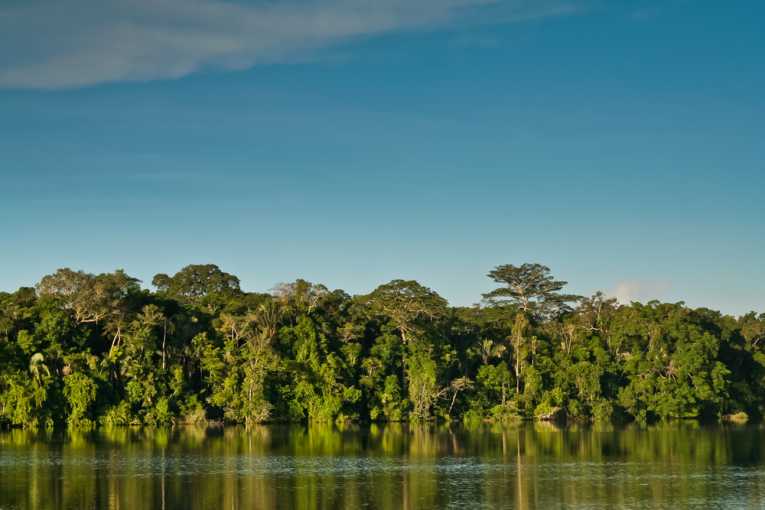In Peru, over a third of forested lands are used and occupied by indigenous communities. However, their legal rights to their traditional land are frequently undermined, and the REDD+ program threatens to heighten such human rights abuses, say authors of a new report. The Interethnic Association for the Development of the Peruvian Amazon (AIDESEP), the Federation of the Native Peoples of the River Madre de Dios and Its Tributaries (FENAMAD), and the Asháninka Centre of the river Ene (CARE), all indigenous Peruvian organizations, have just released the new report, titled "The Reality of REDD+ in Peru: Between Theory and Practice-Indigenous Amazonian Peoples' Analyses and Alternatives."
REDD+ (Reducing Emissions from Deforestation and Degradation) is a global carbon trading scheme that would let wealthier nations offset their carbon output by investing in the protection of forests in developing nations. Disenfranchisement of local people in the development of REDD+ initiatives has long been a controversial issue.
Some of the worst REDD+ abuses to date in Peru include strict confidentiality contracts with no legal protection or oversight for indigenous communities, even for peoples who are not fluent in English (the language of the contracts) or even written Spanish. And those cases involve communities that actually have legal rights to their lands. Hundreds of "invisible" communities have no legal recognition of their own existence, or title to their traditional land. Indigenous peoples often have land use rights, but not title to the land, and their rights have been consistently eroded for the past 20 years, just as their land has been consistently degraded for mining, logging, and oil and gas extraction, the authors emphasize.
The authors cite inadequate readiness for the REDD+ program, noting that a mass land grab could result, particularly for the millions of contested hectares caught up in indigenous land rights cases. REDD+ is progressing much more rapidly at sub-national levels than at the national level in Peru, a recipe for lax oversight and enforcement of protections against human rights abuses, they assert. Existing laws fail to provide adequate protections for indigenous peoples and their land, the authors note, implying that the government of Peru will be unlikely to side with indigenous communities regarding their land rights.
"'Carbon pirates' are convincing indigenous communities to sign away their rights to land and carbon under terms that are highly favourable to commercial interests and offer little or no guarantee for the protection of indigenous peoples' fundamental rights," say the authors. In other cases, community consultation has been taking place only after projects begin.
Without dramatic legal reforms to ensure the land rights of indigenous Peruvians, the REDD+ program will further disenfranchise indigenous people, the authors conclude. Instead of throwing large sums of money at "unproven and unstable carbon markets," they support modest funding to promote community forest development and ensure indigenous land rights." "Only in this way can REDD truly become an opportunity for indigenous peoples instead of a threat," Alberto Pizango Chota, President of AIDESEP, has said. A recent study has shown community forests to be safer than "protected areas," as local people's livelihoods depends on the health of community forests.
Furthermore, biofuel plantations must be excluded from the REDD+ program, the group asserts. Allowing biofuel monocultures to be used as carbon offsets would be an outrageous irony, as these plantations often cause far more environmental destruction than they prevent. The report's authors note that many indigenous Peruvian groups hold that funding REDD+ with carbon offsets de-legitimizes the entire initiative, implying that the program is flawed at its core. Many outside critiques have voiced the same belief, asserting that large-scale carbon trading schemes will maintain levels of pollution consistent with the norm or, due to inevitable corruption and difficulties with oversight, will lead to greater levels of pollution than before, while fueling the growth of a dangerous carbon trading bubble.










